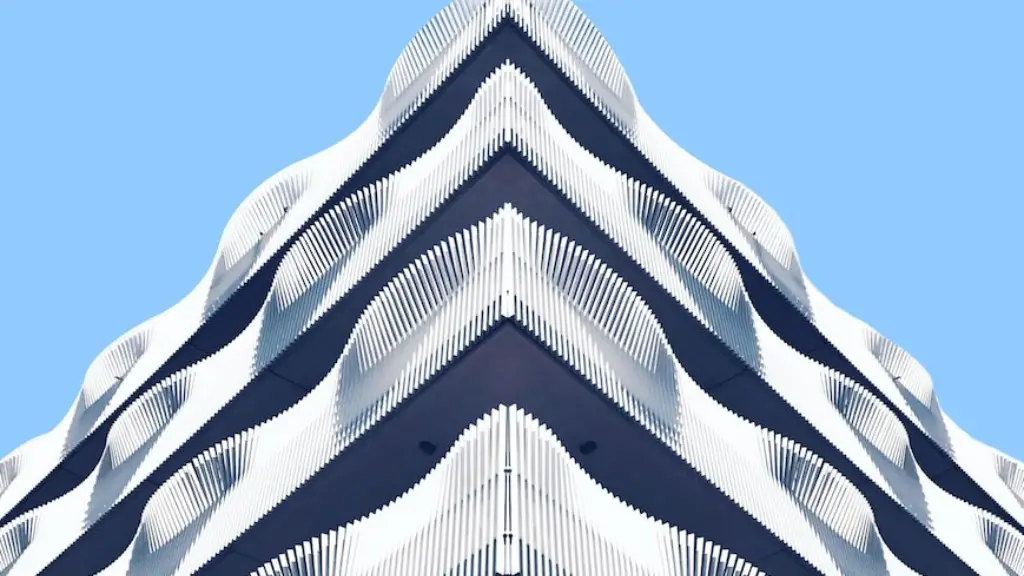1. What Is Art and Architecture?
Art and architecture are two of the most influential creative endeavors of humanity. Art is the expression of creative skills or imagination and is primarily used for decoration or self-expression. Architecture, on the other hand, is a science and an art, involving the use of engineering, mathematics and aesthetics to plan, design and construct structures for a variety of purposes. Art and architecture often go hand in hand, with one influencing the other.
2. Connection between Art and Architecture
Art has been an integral part of architecture since ancient times. From the earliest structures, such as the Greek temples, to more complex and modern structures, art has been used to embellish the external and internal features of a building. The symbolism associated with art, and its ability to invoke emotions in people, also lends itself to architecture. Many paintings, sculptures and reliefs used in interior and exterior design are representations of specific themes and ideas. Therefore, art can be used to convey meaning and make a statement without the use of words.
3. Impact of Art in Architecture
The impact of art on architecture is evident through many iconic buildings around the world. For example, the Taj Mahal in India and the Notre Dame Cathedral in France are renowned for their intricate and beautiful designs. These structures demonstrate the use of meticulous craftsmanship combined with exquisite artwork to create breathtaking monuments. Moreover, many of the most iconic landmarks in the world, such as the Eiffel Tower in Paris, the Sydney Opera House in Australia and the Statue of Liberty in New York, can’t be separated from art. In each of these cases, architecture is inseparable from its artistic additions.
4. Examples of Artistic Realizations in Architecture
The integration of art into architecture has many different examples worldwide. Some renowned examples of this include the Grand Mosque of Kairouan in Tunisia and the Doge’s Palace in Venice. In both instances, intricate carvings, mosaics and stained-glass windows were used to enhance the beauty and richness of the building. The Beijing National Stadium, known as the ‘Bird’s Nest’, is an example of modern architecture that combines art and technology in a playful and unconventional way. The spectacular structure stands out in its environment, attracting visitors from all over the world.
5. Interplay between Art and Architecture in Everyday Life
Even in the modern world, art plays a significant role in architecture. There are countless examples, from the graffiti and wall art found in urban settings to the lettering, sculptures and paintings that adorn many public and private buildings. Additionally, art is often used to add an element of personal style to the exterior of a building. In the same way, art has a prominent place in the internal design of many commercial establishments such as retail spaces, restaurants and even offices.
6. Benefits of Combining Art and Architecture
The combination of art and architecture adds beauty, symbolism and meaning to a structure, making it more captivating and inviting. Art also has a positive effect on people’s health, reducing stress levels and enhancing wellbeing. Public art has become so beneficial to society that certain cities and countries are dedicating funds and efforts to enhance their local artistic landscape. Examples of this include the London Public Arts Project, which provides grants for the development of public art across the city.
7. Challenges with Combining Art and Architecture
The combination of art and architecture can bring with it numerous challenges. Art and architecture both require meticulous planning and execution, and therefore there is a need to integrate both fields in a harmonious manner. Additionally, there is a challenge in finding right balance between functionality, practicality and aesthetics when combining art with architecture. For instance, a building that is too ornate might not be practical and functional, whereas a building without any artistic touches might be too plain. Finding the right balance is therefore paramount.
8. Conclusion
Overall, art and architecture are two fields that are intrinsically intertwined. Art is often used to dress up and enrich a building, thereby making it more visually appealing and interesting. At the same time, art also has a practical significance as it can help make a structure more functional and inviting. Furthermore, art can be used to make a statement or to create a sense of harmony in a building. Thus, art and architecture share an inseparable relationship, and their combination can result in some of the most iconic structures in the world.
Section 1: The Development of Art and Architecture
1.1 Historic Art Movements
Art movements have played a significant role in the evolution of architecture. Throughout history, various art movements have shaped architectural styles. For instance, the Baroque and Rococo period brought with it elaborate and ornate designs, whereas the Art Deco period favored more streamlined and angular designs. Similarly, the light-filled Classical and Renaissance periods both heavily influenced European architecture. In each of these cases, the art movement of the time period was deeply intertwined with architecture in order to create iconic buildings and monuments.
1.2 The Role of Artists
Numerous artists have significantly impacted the development of various architectural styles. During the Middle Ages, Gothic and Romanesque churches, with their detailed stone carvings, were strongly associated with the works of various sculptors and painters. Later, revered Renaissance artists, such as Michelangelo, used their vast knowledge and skills of geometry, engineering and anatomy to design some of the most iconic buildings of the time period. Similarly, popular architects throughout history, such as Le Corbusier, Frank Lloyd Wright and Walter Gropius, were also influenced by renowned modern art movements, such as Surrealism and Minimalism.
1.3 Cultural Influences
The culture of a particular region often has a significant effect on the architecture of the area. Different cultures usually favor different types of designs and materials, leading to distinct forms of buildings. For example, in the Mediterranean region, terracotta tiles are often used in roof design, whereas in the Nordic countries, wooden log cabins are a common sight. Art has also been used to convey cultural values and memories, from the temples of Ancient Greece to the pagodas of China. As such, culture and art have played an important role in shaping the face of architecture.
1.4 Technology and Art
Technological advancements have also played a key part in the development of architectural styles. Advances in materials, tools and engineering have allowed for the construction of larger and more complex structures. Architects have also used advances in technology to help create art that is integrated into their designs. For instance, modern buildings often feature intricate 3D sculptures and LED lighting effects which are created using the latest technologies.
1.5 Contemporary Art and Architecture
In recent times, the relationship between art and architecture has become even more closely intertwined. Technology has played a particularly important role here, enabling architects to create works that can be seen far and wide. For instance, many structures are being fitted with sensors and interactive components which can respond to the environment and change their appearance according to the weather, time of day and other factors. Furthermore, many modern buildings incorporate classic art forms to add an element of visual excellence to the building sections.
Section 2: Effects of Art and Architecture in Daily Life
2.1 Impact on Society
Art and architecture have had a huge impact on society. Iconic buildings and monuments often become symbols of the community or nation, and help cement historical identities. Furthermore, the works of art in these buildings often symbolize the values of the people, such as hope, freedom, or unity. Buildings and artworks can also become popular tourist attractions, bringing in additional revenue for the region. Therefore, art and architecture can have a positive effect on society and help to shape the identity of a particular area.
2.2 Inspiration and Creativity
Another important effect of art and architecture is the ability to provide inspiration and unleash the power of creativity. Architects often draw inspiration from the works of other designers, making subtle adaptations and improvements to further enhance the structure. Art can also act as a trigger to generate new ideas and concepts, allowing more unique and groundbreaking designs to come into fruition. Therefore, art and architecture can be seen as a powerful combination that unlock future possibilities and are vital to the continued advancement of the fields.
2.3 Mental and Physical Benefits
The presence of art and architecture in everyday life can bring about positive benefits for both the mind and body. Studies have shown that exposure to art can reduce stress levels, enhance creativity and stimulate the brain. Similarly, well-designed buildings can help create a more enjoyable and comfortable living environment which can in turn help to improve mental and physical wellbeing. Therefore, objects of art and architecture can be seen as powerful and transformative agents of social improvement.
2.4 Accessibility
As these days, accessibility is increasingly becoming a concern for many, art and architecture is often used to create spaces that are safe and accessible for people with disabilities. From controlled entryways and audio guides to tactile features and visuals, art and architecture can be used to create environments that are welcoming and accessible to all. As such, art and architecture can have a positive role in making sure that everyone can take advantage of the wonderful places they have to offer.
2.5 Contemporary Art as Architecture
Art nowadays is often used as a form of architecture, with many activities and events taking place in the streets and public spaces. Street art and other forms of art that involve the use of public spaces to display works of art bring the community together and help create stronger bonds. Events such as concerts, festivals and exhibitions can also be seen as forms of art that rely heavily on architecture in order to build the necessary infrastructure. Thus, art and architecture can both coexist to create a fascinating and vibrant atmosphere.
Section 3: Issues Related to Art and Architecture
3.1 Preservation of Art and Architecture
The preservation of valuable works of art and architecture is essential for the ongoing preservation of our heritage. Although some works are in danger of being lost due to the impact of human activities and nature, art and architecture can be preserved with careful restoration and conservation processes. By engaging with leading professionals, artwork and monuments can be restored to their former glory. Additionally, preventative measures such as the installation of protective coatings and waterproofing can be used to help to protect them in future.
3.2 Legal Framework
Efforts to preserve and protect works of art and architecture often require a legal framework to provide legal protections. Governments have thus had to create laws and regulations to protect valuable works from potential damage or destruction. Furthermore, different countries have different laws concerning architectural processes, such as the submission of building plans, the awarding of construction contracts and other matters. As such, it is essential for governments to provide a legal framework to ensure that all works are treated properly and with respect.

